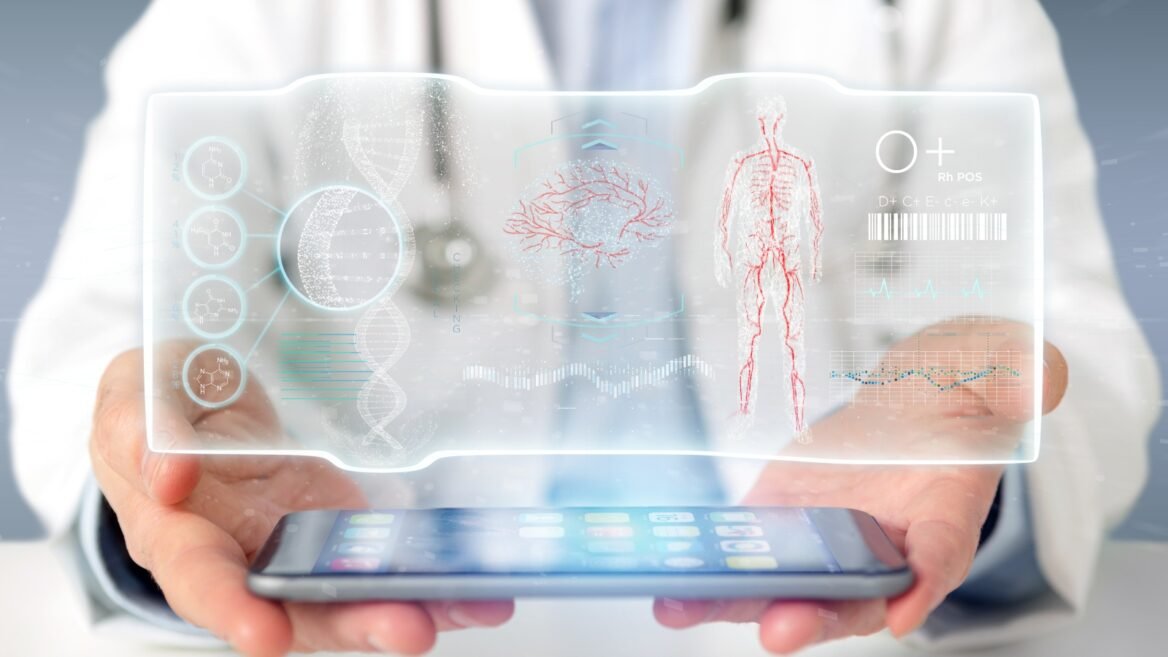Advantages Over Stand Alone Medical Devices
Mobile health technology is a booming field both at the consumer and professional levels. There are currently more than 100,000 personal health tracking apps available for smartphone users. These apps range from simple step trackers to diet analysis apps, sports performance tracking, and more. Professional uses for the smartphone are growing just as fast, from telemedicine to remote patient monitoring, to even replacing certain standalone medical devices.
Replacing? Yes. The smartphone has numerous advantages over standalone medical devices. Some are obvious. Others, however, are only starting to come into their own.
Accessibility
There are more than 6.5 billion smartphone users in the world today. That’s a bit more than 83 percent of the world’s population. By 2026, that number is expected to increase by another billion. From an accessibility standpoint, smartphone based medical technology makes good sense for both practitioners and patients.
Portability and Space Savings
Personal EKG devices are used by doctors to diagnose arrhythmias and other heart problems. Patients also carry these devices to monitor their conditions. Many of today’s personal electrocardiogram monitors are about the size of a large smartphone. That’s not unwieldy, but it is another piece of equipment to carry around and keep track of.
Apps like Alivecor’s Kardia can provide patients and practitioners with a medical grade EKG reading on demand, straight from the patient’s (or physician’s) own phone, without the need for an additional piece of equipment. Likewise, Lumify by Phillips is a professional grade personal ultrasound that eliminates the need for a bulky standalone ultrasound machine. Lumify, and similar smartphone based ultrasound products, consist of only a smartphone app and a transducer.
These are just two examples.
Smartphone based medicine can be especially convenient for patients undergoing numerous types of health monitoring, or medical professionals working remotely or with limited space. A single device with removable external hardware that can perform a variety of functions can make things easier and more efficient for everyone.
Instant Communication and Feedback
Smartphones have enabled us to share information more easily and rapidly than ever before. Instead of waiting for test results to arrive and be disseminated to patients and colleagues, smartphone based testing apps facilitate instantaneous, secure sharing of vital information. This, in turn, enables a more rapid medical response. For patients with ongoing or recurring symptoms, or conditions that are likely to change unexpectedly, instant feedback to their practitioner can mean faster response and better outcomes.
There are some pretty exciting things happening with smartphone based testing in its own right, and we’ll discuss this in a bit.
Professional Grade Power
From imaging to sensors, today’s smartphones have some impressive abilities, which lend themselves to medical uses. And these abilities are only becoming more sophisticated.
Imaging and Sensing
Long gone are the days of cheap, inferior phone-based cameras and sound. Many of today’s smartphones offer professional grade features with direct biomedical applications, including:
High definition image and video capture
High speed and slow motion video
Optical zoom
Low light image capture
Microscopic imaging
Motion sensing
Multi-format sound output
Gyrometer
Accelerometer
Temperature and light sensing
Heart rate detection
Continuous glucose monitoring
In addition, smartphones have been the basis of some very exciting developments in laboratory testing, including microbiological diagnostics. Two scientists from the University of Cincinnati, for example, have developed a “mobile lab” that they say can rapidly detect viruses and bacteria like COVID-19, HIV, Lyme disease, and malaria using a thumb-drive sized chip that plugs into a smartphone. The accompanying app analyzes a saliva sample and transmits the results instantly to the appropriate medical professionals.
Another team, from the University of California, have produced an inexpensive, easy to use, rapid test for COVID-19, with accuracy that rivals that of a PCR test, but at a fraction of the cost. This test also relies on saliva analysis, and uses a smartphone’s camera to measure the color changes that indicate the chemical reactions that lead to a diagnosis.
Memory and Processing Power
Memory and processing are becoming faster, stronger, and more compact every day. Many of today’s smartphones have incredibly fast and powerful CPUs, with RAM capacity as high as 12 GB and internal storage as high as 128 GB. This has powerful implications for image and data analysis.
Current Biomedical Uses for Smartphone Technology
Smartphone use at the point of care is already commonplace in many areas, and making a difference for patients and practitioners.
Telemedicine
During the first wave of the COVID-19 pandemic, many workplaces went virtual. Rather than shut down services altogether, many physicians’ practices replaced face to face appointments with remote consultations. Smartphones enabled patients to not only communicate with their physicians via voice or video, but also to help their physicians to detect and diagnose potential conditions, for example skin cancers.
The temporary switch to a telemedicine model had some unexpected results. Even though the number of appointments increased during this time, patients in a survey by Nuffield Health were more likely to feel that their needs had been met, more likely to report that they felt their practitioners had spent adequate time with them, and more likely to report that they felt that their practitioners recognized and understood their mental health needs. Physicians in the same survey were satisfied with remote appointments, and 88 percent felt that phone and video consultations should be retained in the long term.
It goes without saying that, combined with the powerful potential for testing and monitoring, smartphone based medicine is poised to revolutionize care for people in remote areas, as well as for others who find it difficult to participate in face to face appointments
Remote Monitoring and Self Monitoring
Another area where smartphone medicine is coming into its own is remote monitoring and self monitoring. Smart watch users can already track their heart rate, for example, through the process of photoplethysmography. Some models can even notify users if their heart rate falls above or below the normal range. Smartphone apps allow users to use their phone’s camera for similar purposes.
Smart glucose self-monitoring has become extremely sophisticated, with products ranging from wearable continuous glucose monitors to glucose-detecting toothbrushes to smartphone apps that allow users to instantly test their glucose and get a reading. Smartphone apps can also analyze the collected data and transmit it to medical providers.
A smartphone based urinalysis product called Dip.io has recently been approved by the FDA for home use to detect glucose, specific gravity, blood, pH and protein, and nitrates. This will be a boon for patients with high risk pregnancies, urinary tract infections, and some chronic medical conditions.
Clinical grade smartphone-based blood pressure monitoring is still an emerging technology–at this time, apps can only give an estimate–but that technology is developing fast.
Physician Reference
Patients have become accustomed to the presence of a computer in the examination room, as well as to practitioners consulting records and reference materials during an examination. Medical reference apps such as Epocrates, which put information about safety, diagnostic, and treatment at practitioners’ fingertips, can help to save time and money, as well as to help physicians avoid mistakes.
What’s Around the Corner?
What developments might we expect to see in smartphone medicine in the near future?
First, we can expect health monitoring to become even more sophisticated. Many wearables already have the ability to notify users when their stress levels become elevated, or when their heart rate goes above or below normal levels. A number of fitness watches also have incident detection systems that will notify loved ones or the authorities in the case of an adverse event. Perhaps we will see similar features in future smartphone-based heart, glucose, and blood pressure monitors.
As we’ve mentioned, developments in the area of smartphone based laboratory testing are exciting and moving quickly. In addition to app-based blood pressure monitoring, some products under development include smartphone-based pregnancy tests, sample analysis, and more sophisticated tests for different diseases.
And that’s only the beginning.

